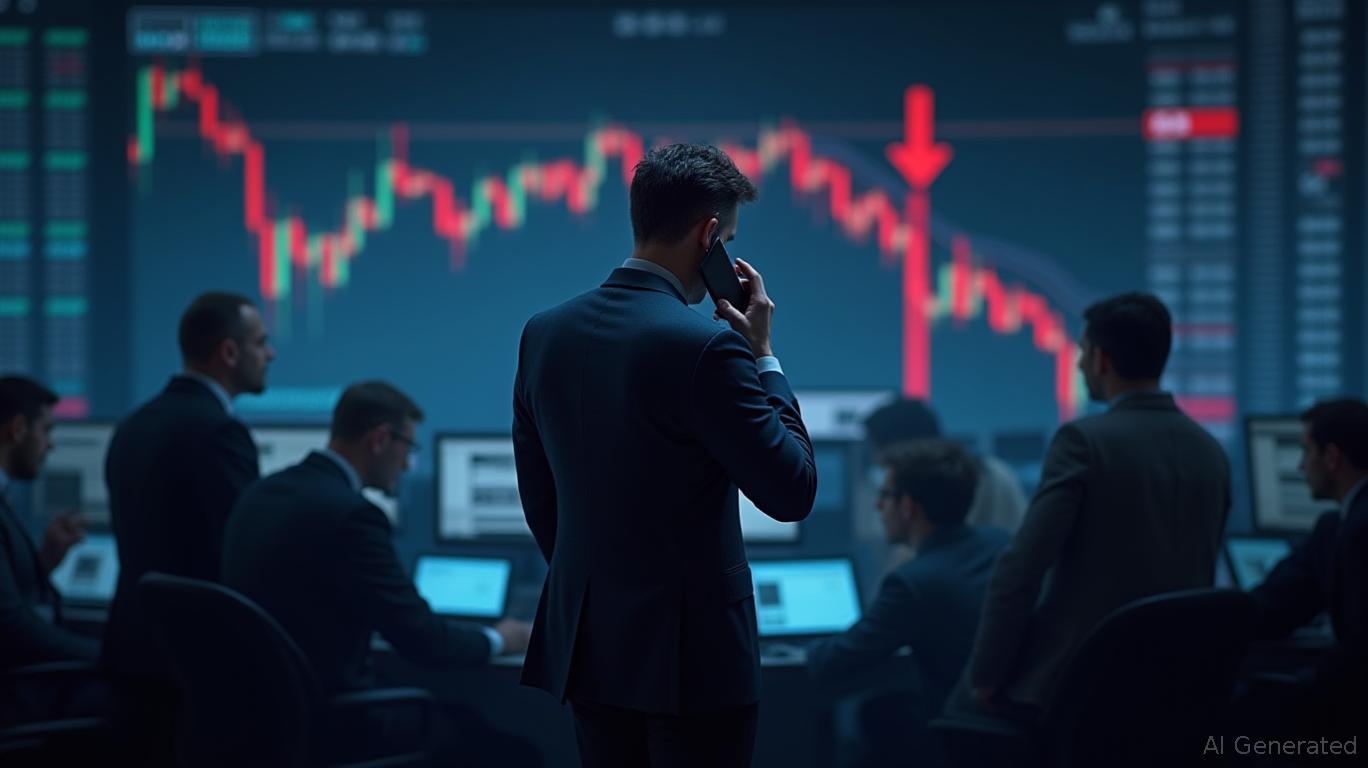U.S. and China Reach Rare Earth Agreement: One Year of Stability Despite Ongoing Competition
- China suspended new export controls on rare earths and other materials for one year, easing U.S.-China trade tensions via a Trump-Xi agreement. - The deal includes U.S. tariff rollbacks and China halting investigations into semiconductor firms like Nvidia , with provisions expiring in 2026. - Experts warn China's 90% refining dominance and low-cost production ensure its strategic leverage remains unchallenged despite temporary concessions. - U.S. rare earth stocks rose, but analysts stress global supply
On October 30, 2025, China revealed it would pause the implementation of new export restrictions on rare earth minerals for a period of one year, signaling a notable easing of trade frictions between the U.S. and China after a meeting between President Donald Trump and Chinese President Xi Jinping, as reported by
The arrangement also includes China ceasing its investigations into U.S. semiconductor companies, such as antitrust and anti-dumping cases against firms like

China’s dominance in rare earths—responsible for 90% of global refining and 70% of mining—has long served as a strategic tool, according to
Market responses to the agreement were varied. Shares of U.S. rare earth companies such as
At the same time, the U.S. government has ramped up investment in domestic rare earth production. For example, the Department of Defense entered a $400 million equity agreement with MP Materials to support a magnet manufacturing plant, including a price guarantee for neodymium-praseodymium, a crucial magnet component, as reported by
Although the Trump-Xi deal provides short-term relief, it highlights the underlying instability in U.S.-China economic ties. Both countries have achieved important concessions—Washington’s tariff reductions and Beijing’s export relaxations—but the lack of a lasting solution means tensions could easily resurface. As analysts have observed, the effective lifting of controls may bring temporary market stability, but China’s overwhelming role in rare earth mining and processing continues to give it significant influence.
Disclaimer: The content of this article solely reflects the author's opinion and does not represent the platform in any capacity. This article is not intended to serve as a reference for making investment decisions.
You may also like
Bitcoin Updates: Imminent Short Squeeze Expected as Investors Anticipate Short-Term Drop
- Growing short bias in Bitcoin perpetuals on Binance, Gate.io, and Bybit shows 51.71% of positions are bearish, signaling cautious trader sentiment amid market volatility. - Macroeconomic pressures, regulatory uncertainties, and technical resistance drive risk-off behavior, with traders hedging against potential price declines. - Elevated short positions raise short-squeeze risks if prices unexpectedly rally, while analysts urge combining sentiment data with on-chain metrics and fundamentals. - Leverage a

Bitcoin Updates: MSTR's Bitcoin Strategy Faces Market Slump and Political Challenges
- MicroStrategy (MSTR) bought 397 BTC at $114,771, boosting its $69B Bitcoin holdings via stock sales, per Coindesk. - Analysts warn MSTR's slower BTC purchases since September may hinder price recovery, as ETFs and corporate buying historically drove demand. - Trump's pardon of Binance's Zhao raises conflict-of-interest concerns, linking Binance to Trump's crypto venture World Liberty via USD1 stablecoin ties. - Bitcoin fell below $108,000 as altcoins struggle; Altcoin Season Index at 24 shows 75% underpe

GIGGLE Token's Price Swings Challenge Crypto-Charity Stability While Giggle Academy Distinguishes Itself
- Giggle Academy, founded by Binance’s CZ, offers free AI-driven education to 70,000+ children globally, focusing on literacy, numeracy, and social-emotional skills. - Binance’s GIGGLE token surge has sparked debates, with 50% of trading fees to be donated to the Giggle Fund, though the academy disclaims official ties to the token. - The token’s 222% price swing highlights speculative risks, yet the academy maintains 5% of all GIGGLE trades fund its programs, emphasizing transparency and independence. - Th

YFI - Decreased by 44.53% Year-Over-Year as of November 6, 2025 During Ongoing Decline
- YFI fell 0.6% in 24 hours, extending a 44.53% annual decline amid sustained market pressures. - Analysts note bearish technical signals: oversold RSI, weak buying pressure, and failure to breach key moving averages. - A backtesting strategy examines historical 10%+ single-day drops to assess YFI's post-decline recovery patterns and risk profiles.